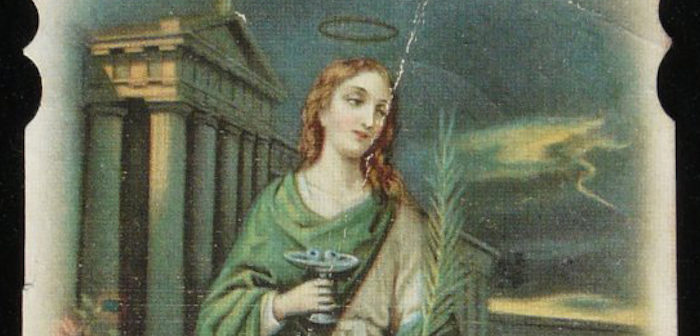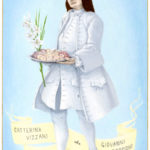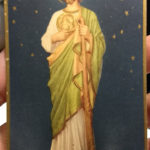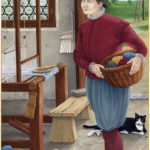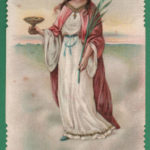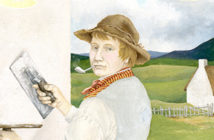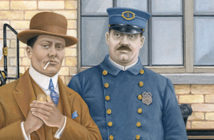Catholic holy cards are cherished objects. I chose to use the format and style of the holy card for my Butch Heroes series because of their connection to my personal history. Even though I’m not a Catholic any longer, I still have a fondness for the imagery and the dramatic storytelling. By using this format, it is not my intention to imply that my subjects are “holy” in any way; rather, I’m using the format of the holy card in its traditional sense, as a means of remembrance and reverence. For me, this intimate format is a perfect (and subversive) way to remember, honor and elevate the lives of people who were often persecuted by the church and are long forgotten.
Traditional Catholic holy cards are beautiful, intimate, colorful, sometimes grotesque or even humorous objects. They are full of visual signifiers that help to tell the story of the saint depicted. Some holy cards even include relics, bits of bone or other artifacts from the deceased saint. Those were my favorite as a kid. A little window in the card would have a bit of some unidentifiable material wedged between clear plastic. It was fascinating to imagine that that tiny bit of whatever was at one point physically connected to this (holy) person depicted on the card.
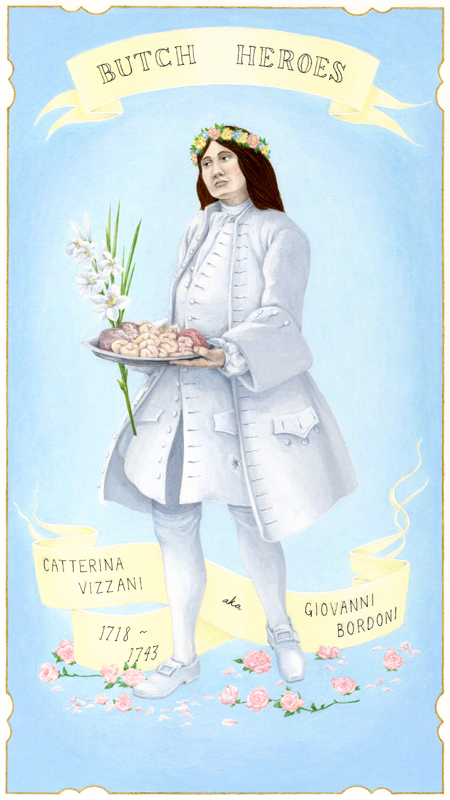
Ria Brodell, "Catterina Vizzani aka Giovanni Bordoni 1718-1743 Italy," 2012, gouache on paper, 11 x 7 inches, In the collection of the Davis Museum at Wellesley College
They’re still handed out at funerals to help honor deceased family members, or used to mark special occasions, or even just exchanged between friends and family as kindly gestures. As a child, the saints depicted on the holy cards were presented to me as role models. They are figures from church history that are revered; one is meant to look to them for guidance or to help find peace. When I was in my first semester of undergraduate studies in Chicago, I had a rough start. Some of my financial aid had fallen through, and I thought I might have to go home. My grandma gave me a St. Jude card. He’s the patron saint of desperate cases and lost causes. I’m sure her intention was for me to pray to St. Jude for help, and though I appreciated the gesture I also thought it was funny, and a bit melodramatic. I still have that card.
I want to make the lives and stories of the Butch Heroes tangible to a contemporary audience. The imagery in the portraits alludes to aspects of the subject’s life, similar to the way the holy card presents the life of the saint. Sometimes I depict them in their everyday lives, relaxing or working, with their partners or pets. Other times I show them enduring their struggles or at the moment of their death. Mary de Chaumont en Bassigny worked as a weaver and was eventually hanged for marrying a woman and “having, by unlawful practices and inventions, supplied [sic]the defects of her sex.” So, as a bit of foreshadowing, I included the gallows in the background of the painting.
Some depictions are more overtly Catholic than others. Catterina Vizzani, aka Giovanni Bordoni, for instance, was dissected and examined after death in an effort to find the cause of their homosexuality. In addition, they were seen as a virgin (despite their sexual relationships with women) and were given the ceremonial burial and funeral procession of virgins. There were even attempts to canonize them. I chose to depict Catterina Vizzani, aka Giovanni Bordoni, on a pale blue background with a lily (both symbols of purity and the Virgin) and holding a platter of the internal organs that were examined after their death. This gesture is a reference to St. Lucy, who is often depicted holding her eyeballs on a plate. It’s one of my all time favorite cards.
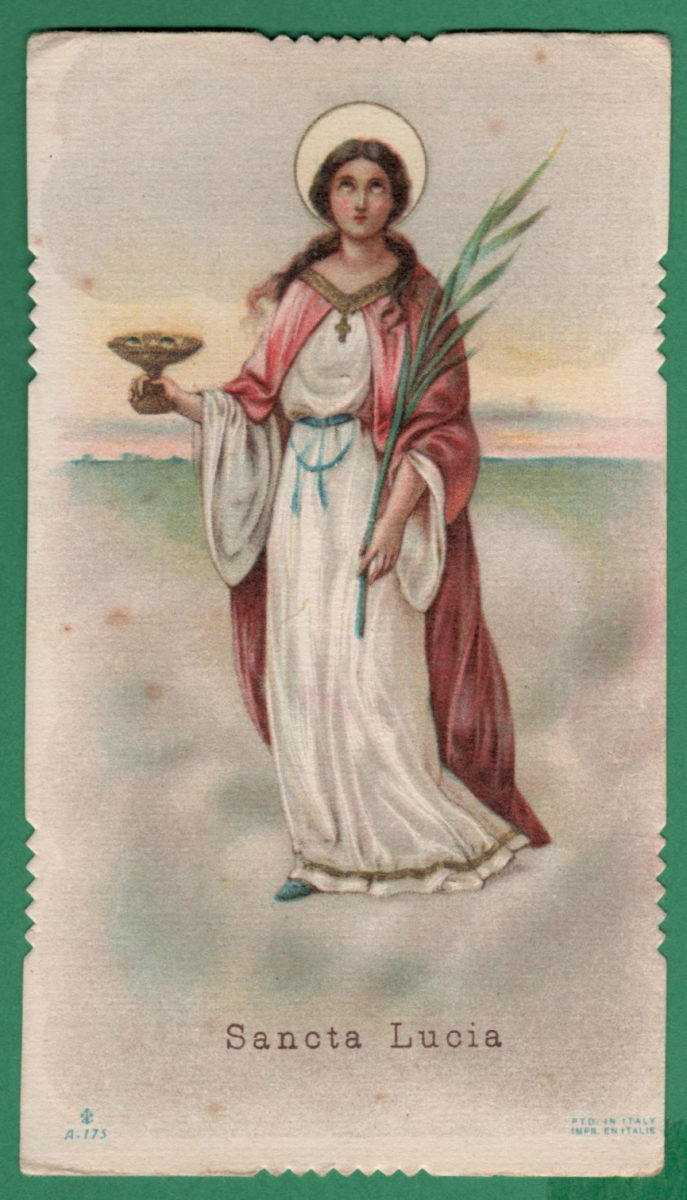
Holy Card of St. Lucy
- Holy Card of St. Lucy
- Ria Brodell, “Catterina Vizzani aka Giovanni Bordoni 1718-1743 Italy,” 2012, gouache on paper, 11 x 7 inches, In the collection of the Davis Museum at Wellesley College
- Holy card of St. Jude
- Ria Brodell, “Mary de Chaumont en Bassigni c. 1580 France,” 2015, gouache on paper, 11 x 7 inches, In the collection of the Davis Museum at Wellesley College
- Holy Card of St. Lucy
- Holy Card of St. Lucy

